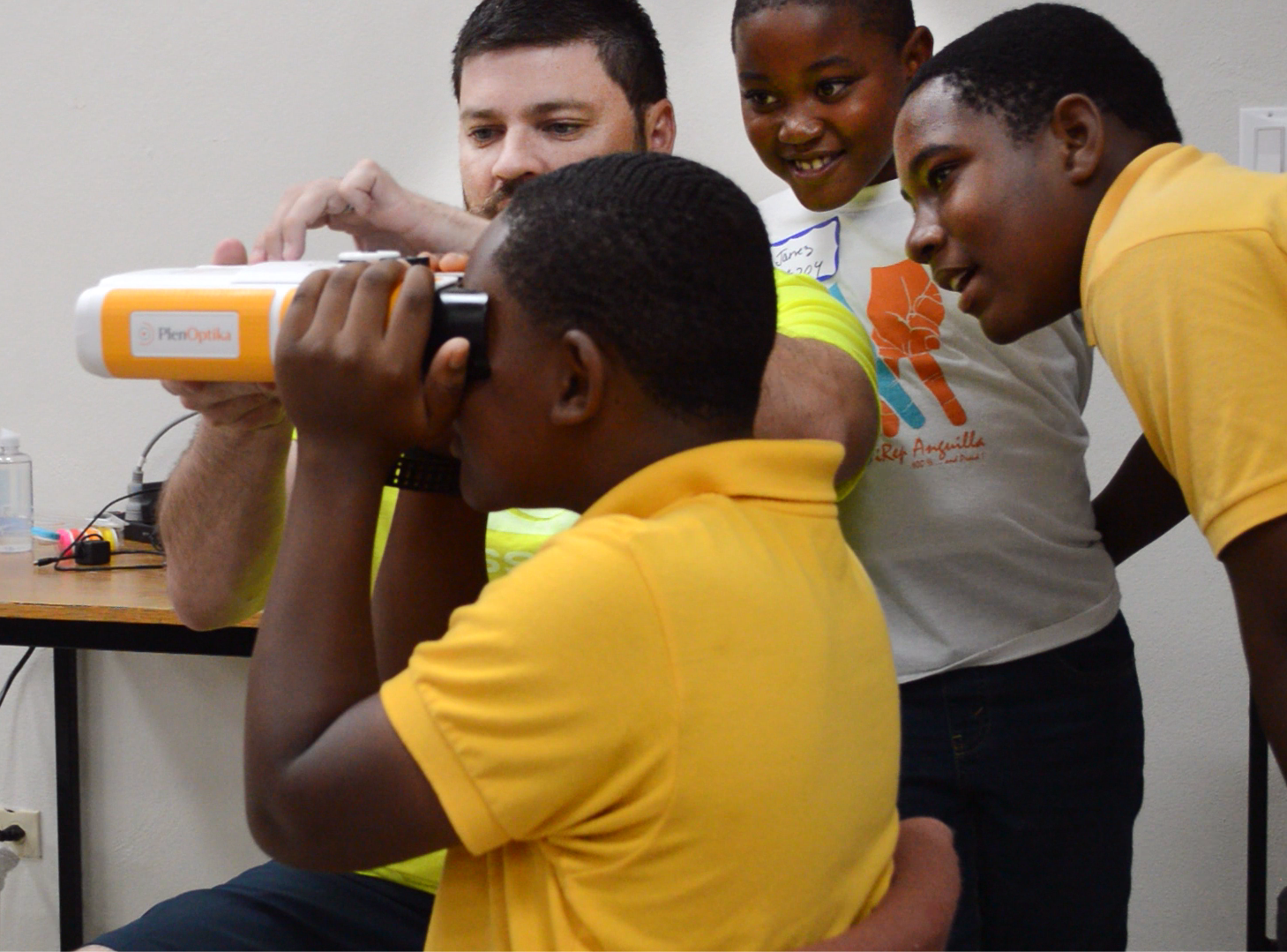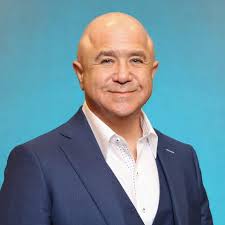
On September 6, 2017, Hurricane Irma swept westward across the Caribbean, causing catastrophic damage along its path. The islands of Anguilla and St Maarten were not spared: homes were wiped away, roads submerged, and estimated losses between the two communities exceed $4 billion.
“These communities were poor to begin with,” said Dr Alan Glazier, a Rockville, Maryland optometrist who led a vision care mission there. “The hurricane caused people who had very little to lose almost everything else.”
A team of eight ODs and 16 support staff, backed by Essilor, traveled to the islands on March 27-29, 2019 and screened more than 1,000 patients. Most patients were students, and after the screening about 60% of the patients received free new eyeglasses. Dr Glazier notes that many children who needed eyewear never had it, and many who did lost their glasses in the storm.
The teams set up their clinics in school rooms and nursing homes. They had five stations for each patient to visit: first to sign in and get a record; a station where they got objective refraction with QuickSee and tonometry measurements; a health station where their eye anteriors were examined; an OD station where they received a retinal examination with a direct ophthalmoscope, and if necessary, a prescription; and finally a table where they would select eyeglasses with their prescription. The frames were sent to Essilor to be fitted with lenses and then sent back to the patients.
The 2019 mission was his second to the islands, and there are plans to return to sustain the impact. “We plan to bring more doctors next year, make things more efficient, and hopefully visit more islands. We are really ramping up the effort to serve more communities.”
“With so many patients to see in a short time, we had to go very fast,” recalled Dr Glazier. “QuickSee was a tremendous asset. Last year when we made the same trip, we had only retinoscopes for objective refraction, so we were able to see about twice as many patients efficiently and with more accurate data than before. It was especially good at getting cylinder measurements.”
The availability of adequate clinical technology is often a critical challenge in global health missions. “You need equipment that is portable, durable, yet accurate,” said Dr Glazier, adding, “and if it needs electricity it better hold a charge, because you don’t always have access to power.” And because often technicians, not doctors, need to use the equipment, it needs to be user-friendly.
Patients like those the team saw in the Caribbean can have striking differences from those vision care professionals usually see in their private practices. “Many people are entering the healthcare system, especially for vision care, for the first time,” noted Dr Glazier. “At home, I might see kids four or six years old. On the islands, we were screening teenagers who have never seen clearly. One of the doctors on this trip saw triplets, maybe nine years old, who were +6, +7, and they never had vision correction.”
Based on his growing mission experience, Dr Glazier has observations to share with other vision care professionals preparing for their community or global health work. “First, you will have to be prepared to be very patient, because you’re often working with people new to healthcare treatment. You will need stamina, because the days can be long and trying. Work on the process flow before you go, so you can work efficiently on site. And finally, have a backup plan in case something goes wrong with your connections, resources, and equipment.”
But whether vision care is performed in a modest schoolroom or a modern clinic, Dr Glazier says, “the better the technology you have and the less time you have to spend using it, the more patient-facing time you get to make accurate diagnoses…if you have something like [QuickSee] that reduces bottlenecks, increases efficiency, and doesn’t break the bank, that’s a real big winner for today’s practices.”
Alan Glazier, OD
Shady Grove Eye and Vision Care (Rockville, MD) and ODs on Facebook community leader
Vision care mission to St Maarten and Anguilla, backed by Essilor

Please note: Our Privacy policy and Terms of service were updated on September 30, 2025
Are you ready to learn how to use QuickSee Free / Free Pro effectively? Tell us about yourself and your circumstances and we will reach out to arrange a training session with you.